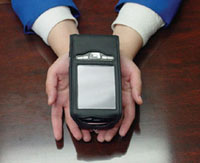Intel Cares for Blind People
This week Intel represented the Intel Reader, a gadget designed to capture and then read electronic text aloud for the user.

Designed for customers with either vision problems or who have problems reading, the Intel Reader is a portable device that will be priced at $1,499 from a network of partners. A Portable Capture Station, essentially a mounting stand for the Reader to facilitate the capture of text, will cost $399.
The Reader was designed for the 55 million or so Americans that are unable or have difficulty reading, whether that be from dyslexia, vision problems, or some other cause.
Intel said that the idea behind the Reader came from Ben Foss, an Intel researcher who was identified in elementary school as someone with dyslexia.
Inside is an Intel Atom microprocessor, a 5-Mpixel camera, and a 4-Gbyte solid-state drive, although only 2-Gbytes is allocated for user data. Although the Reader ships with a 6-cell battery, the included battery can only capture and process 85 pages of text; an AC power adapter is also included.
"The Intel Digital Health Group's expertise is in finding innovative technology solutions to improve quality of life," said Louis Burns, vice president and general manager of Intel's Digital Health Group, in a statement. "We are proud to offer the Intel Reader as a tool for people who have trouble reading standard print so they can more easily access the information many of us take for granted every day."
The Reader is another step for Intel into the digital health space; in 2008, the company launched the Health Guide, a tabletop gadget that Intel marketed to healthcare organizations as a way for patients to take charge of chronic illnesses, and reduce the need for in-person care and appointments.
Intel's partners for the Reader include CTL Corp., Don Johnston, and Howard Technology Solutions.
PC World has contributed to the report.
Subscribe to Pravda.Ru Telegram channel, Facebook, RSS!





